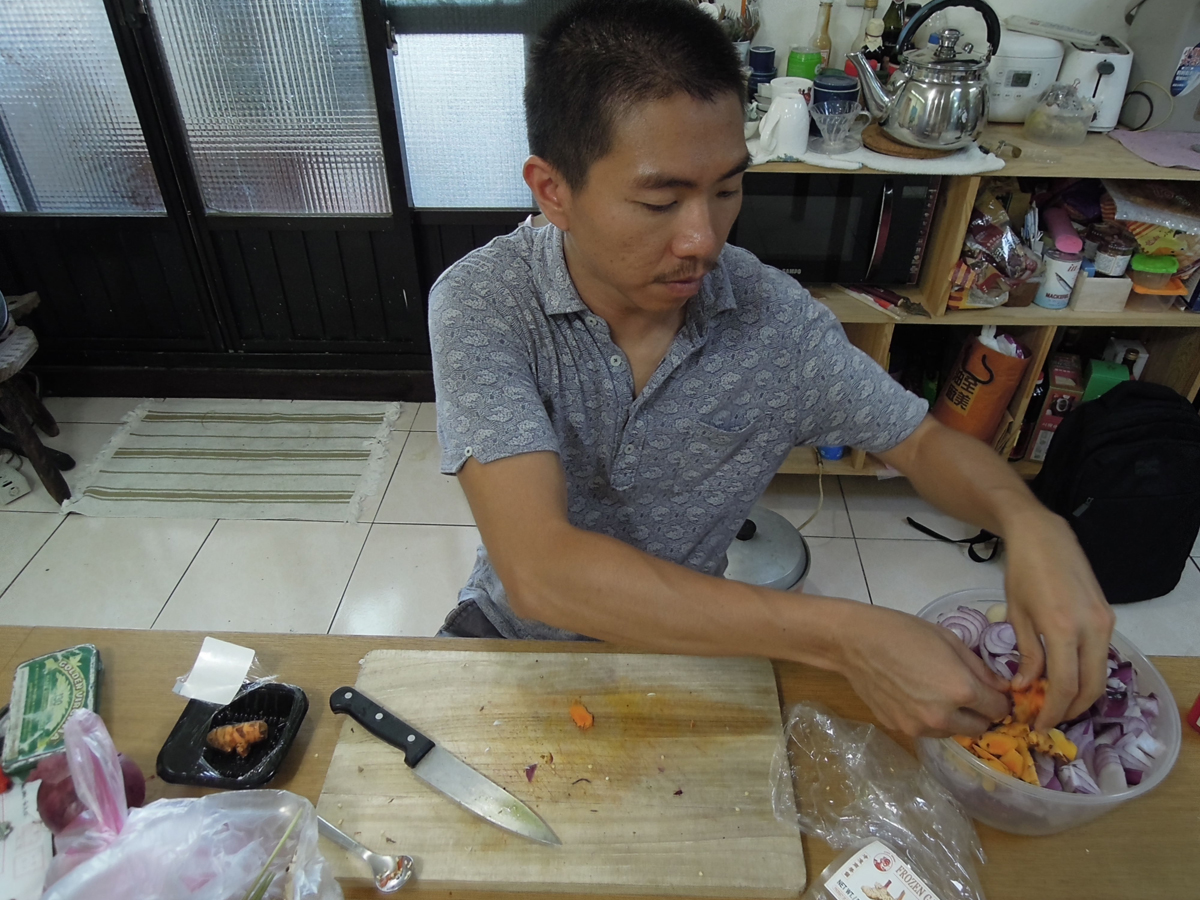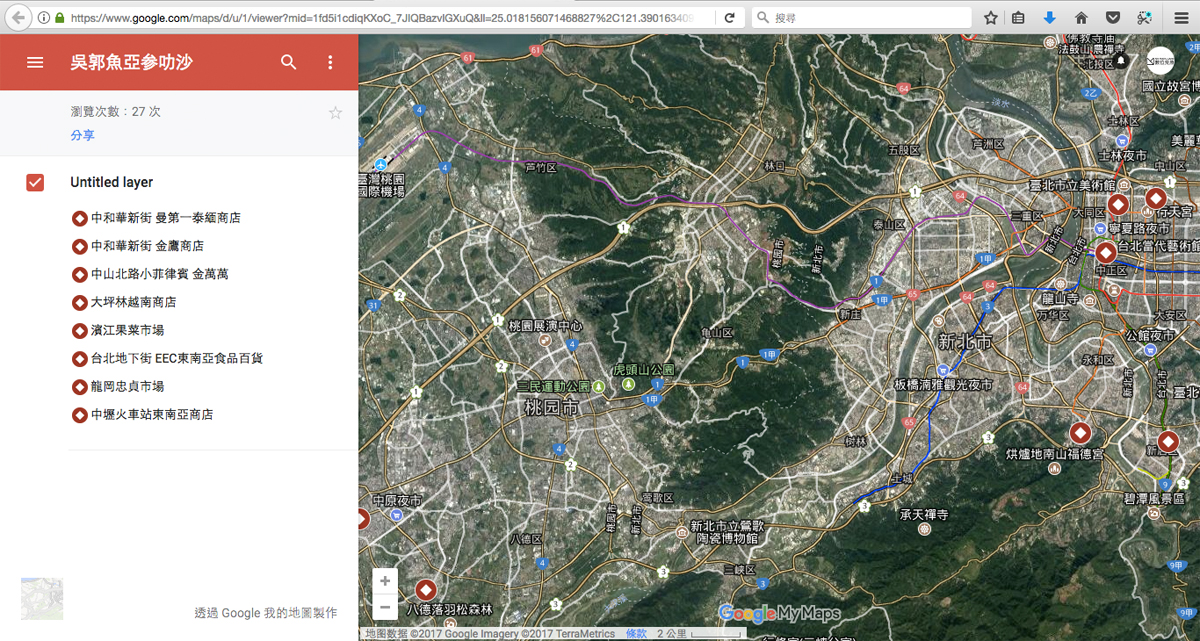Note: The Tilapia fish, or more commonly known as the Wu Guo Yu in Taiwan has a humble origin. However, it has a captivating story to tell as in how it was introduced to Taiwan by two Taiwanese soldiers from Singapore in 1946. The advancement in fish farming technology and the unintended yet colourful branding exercise have gradually promoted this fish as the national sea bream of Taiwan. This sharing session is based on the study of Wu Guo Yu, to look at the form of migratory movement through livestock, the process of domesticating a foreign species and its cultural significance in constructing a national narrative. A Wu Guo Yu sample dish will be served during MNML #19. The artist will like to thank Digital Art Foundation, Taipei for the invitation, OCAC for hosting the residency, and friends from the local art community for their advice and support during his one month stay in Taipei. To revisit the place where Wu Guo Yu was initially brought in from, the artist chose to cook Asam Laksa with it by adding a Nanyang flavour to the supposedly naturalised foreign species, as a gesture of homecoming.
 |
| Photo: Rikey |
Some are suspicious of the Tilapia, especially on how it is farmed, whether it is safe to eat, and if the rumours that surrounding it are true. What we do agree on is that it tastes good and it is inexpensive. You can find it easily in markets, or they can be caught (or scooped out) by the in rivers, streams, or sewer canals. As Taiwan continues to attract the Southeast Asian labour force, so it also indirectly imports their food cultures. The artist will demonstrate a way to cook the Tilapia fish – to make Asam Laksa with it. Asam Laksa is a popular dish in Malaysia and Singapore; it is tangy and spicy, and the stock is usually made from the river fish itself. If this dish is well-prepared, the aroma of the fresh spices not only will take away the muddy smell of the fish, it can also will accentuate its savoriness. The combination of fresh ingredients, garnishes, noodles, and fish make this a refreshing and mouth-watering dish to enjoy.
Portion
serves 7 - 8
Ingredients
1 kg pre-cooked laksa noodles (or thick rice noodles)Stock
Ground spice paste
15 fresh red chilies and 10 dried chilies
80g shallots
6 cloves garlic
1 inch galangal
1 inch fresh turmeric
3 stalks lemongrass (use the white part only)
20g belacan (dried shrimp paste)
15 cups waterGarnish
4 stalks lemongrass (lightly smashed the white part)
2 torch ginger flower (or replaced with Myoga ginger)
3 inches of galangal (halved)
1.5 kg Tilapia fish
4-5 tbsp tamarind paste
10 stalks Vietnamese mint (daun kesum)
Salt to taste
Sugar or to taste
80g red onions (thinly sliced)Seasoning
1 cucumber (thinly sliced)
Chinese lettuce (thinly sliced)
1 torch ginger bud / Myoga ginger (finely sliced)
1/2 fresh pineapple (sliced into small pieces)
2 cups mint leaves
1 red chili (thinly sliced)
Sweetened prawn paste (or XO sauce)
Calamansi (halved)
Method
1. Blend spice paste ingredients into a fine paste.
2. Heat a pot of water and add lemongrass, galangal, torch ginger flower. Bring to a boil and then add fish. Boil on medium heat for 15-20 minutes or until the fish is cooked.
3. Transfer cooked fish to a bowl and let cool. Strain broth to remove spices. Add to the broth the Vietnamese mint, tamarind juice and tamarind peel and continue to boil on low heat.
4. Break the fish meat into tiny pieces, but keep some in bigger chunks.
5. When it reaches a boil, reduce heat and simmer for 40 minutes to one hour. While simmering, add salt and sugar to balance the spiciness and sourness to your liking.
6. Last, fill a bowl with noodle, pour in the soup, and garnish with sliced cucumber, pineapples, onions, mint leaves, chilies, torch ginger flower and fish flakes. Add calamansi lime on the side, and serve with a spoonful of shrimp paste if you like.
Note: Some of the ingredients are not easily available, this recipe has been customised based on what’s available in Taipei at the time of the research residency.
Places to source ingredients, refer to the map
(Scan this QR code on the recipe for Google Maps link)
The Second Fruit and Vegetable Wholesale Market, known as the Binjiang Market
第一泰緬商店、金鷹商店 at Huaxin St, Zhonghe District
Rear of ZhungLi Railway Station
Zhongzhen Street Market in Longgang District, ZhungLi City
金萬萬大樓 at ZhongShan North Road, Taipei City
Vietnamese shop near JiangGuo Market in Qizang MRT Station, New Taipei City
EEC Elite Express in Taipei City Mall(台北地下街)
This recipe was based on the recipe found on the blog "season with spice" and put together based on the ingredients can be sourced in Taipei at the time of the NML research residency. It is part of the content for the presentation of "Wu Guo Yu – The Indigenous Foreign Species", a sharing session organised by No Man's Land.
NML Residency Program & Nusantara Archive (1st year)
September 2017, first edition
By Hoo Fan Chon

沒有留言:
張貼留言